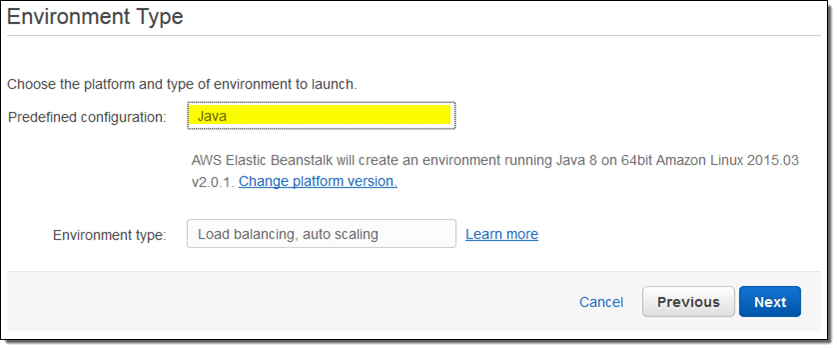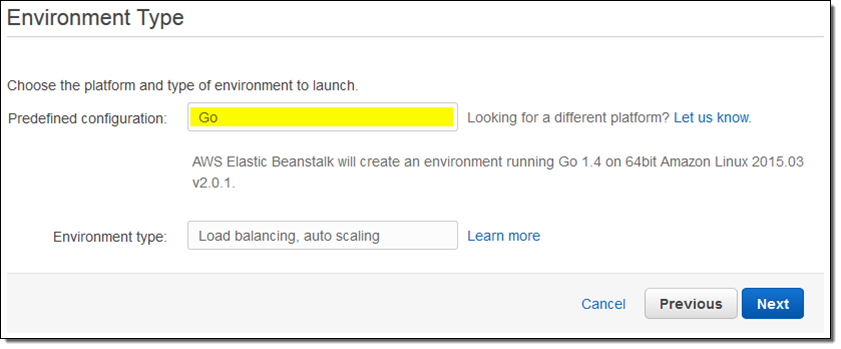AWS News Blog
Elastic Beanstalk Update – Support for Java and Go
My colleague Abhishek Singh is the product manager for AWS Elastic Beanstalk. He wrote the following guest post in order to let you know that the service now supports Java JAR files and the Go programming language!
— Jeff;
AWS Elastic Beanstalk already simplifies the process of deploying and scaling Java, .NET, PHP, Python, Ruby, Node.js, and Docker web applications and services on AWS. You simply upload your code and Elastic Beanstalk automatically handles the deployment, including capacity provisioning, load balancing, auto-scaling to application health monitoring. At the same time, you retain full control over the AWS resources powering your application and can access them at any time.
Today we are making Elastic Beanstalk even more useful by adding support for Java and Go applications. In addition, the new platforms simplify the process of configuring the Nginx reverse proxy that runs on the web tier. You can now place an nginx.conf file in the .ebextensions/nginx folder to override the Nginx configuration. You can also place configuration files in the .ebextensions/nginx/conf.d folder in order to have them included in the Nginx configuration provided by the platform. For more information, see Configuring the Reverse Proxy.
- .ebextensions/nginx/nginx.conf – Overrides the Nginx configuration for the platform.
- .ebextensions/nginx/conf.d – Files are included in the Nginx configuration provided by the platform.
New Support for Java
You can now run any Java application, including those that use servers or frameworks such as Jetty or Play and are no longer restricted to using Tomcat as the application server for your Java applications.
You can deploy your Java application to Elastic Beanstalk in the following ways:
- Upload your application’s JAR file.
- Upload an archive containing your application’s JAR file with a Procfile defining additional command line parameters required to run your application. See Application Process Configuration (Procfile) for details.
- Upload an archive containing multiple JAR files with a Procfile defining how each JAR should be run. See Application Process Configuration (Procfile) for details.
- Upload an archive containing your application’s source, a Buildfile, and a Procfile. For details, see Building Applications On-Server (Buildfile).
To get started, simply create a new Elastic Beanstalk environment and select the Java platform under the Preconfigured category. Both Java 7 and Java 8 are supported:

New Support for Go
Also, you can now run Go language applications on AWS Elastic Beanstalk. You can deploy your Go application to Elastic Beanstalk in the following ways:
- Upload an archive containing your application’s source. AWS Elastic Beanstalk will automatically build and run your application (AWS Elastic Beanstalk assumes that the main function is in a file named application.go).
- Upload an archive containing your application’s binary with a Procfile defining additional command line parameters required to run your application. See Application Process Configuration (Procfile) for details.
- Upload an archive containing your application’s source, a Buildfile, and a Procfile. For details, see Building Applications On-Server (Buildfile).
Like the Java platform, the Go platform also supports running multiple processes by defining them in a Procfile.

To begin using the new platforms, log in to the AWS Elastic Beanstalk Management Console or use the EB CLI to create an environment running the appropriate platform.
— Abhishek Singh, Senior Product Manager, AWS Elastic Beanstalk